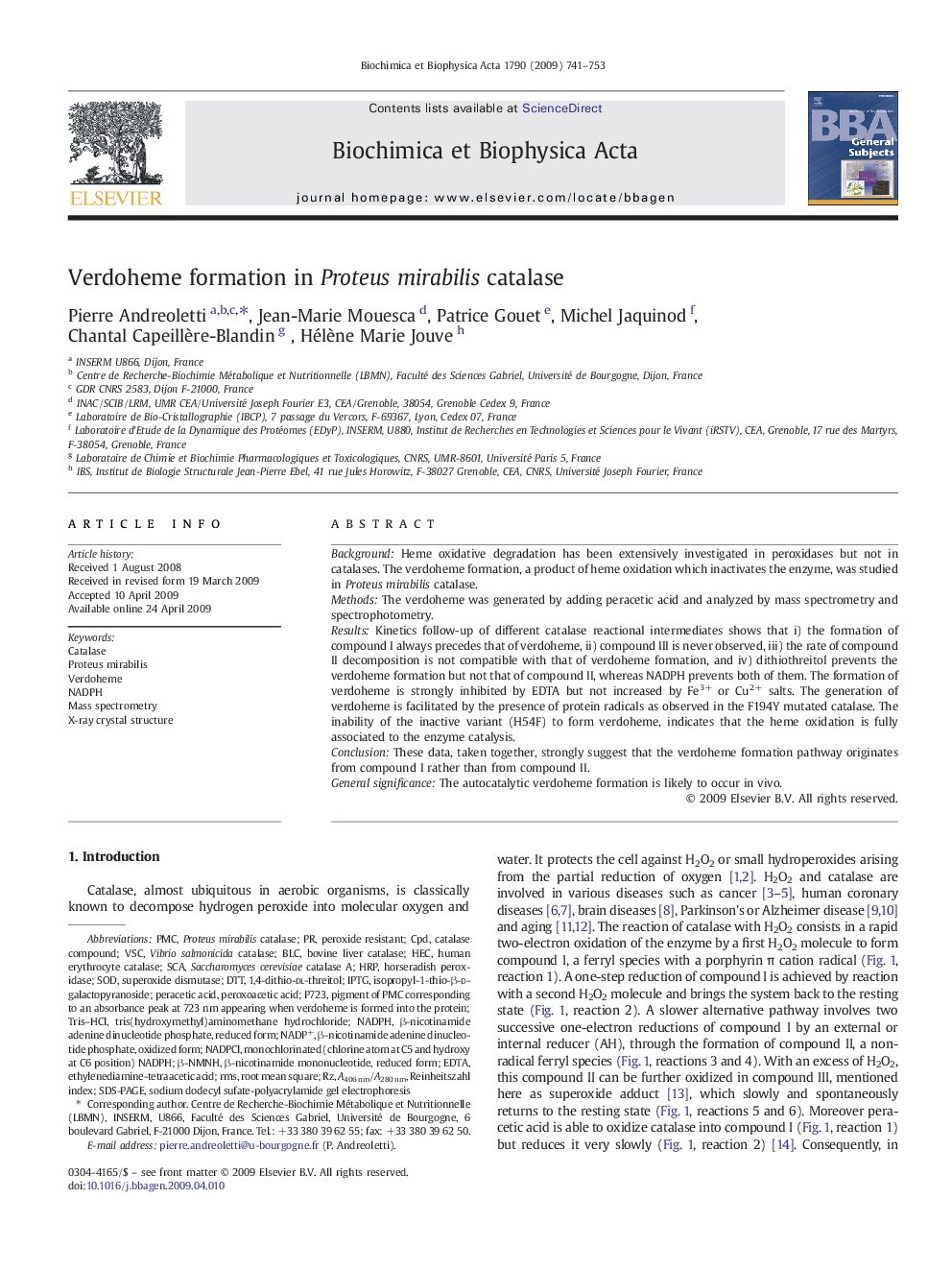| Article ID | Journal | Published Year | Pages | File Type |
|---|---|---|---|---|
| 1948236 | Biochimica et Biophysica Acta (BBA) - General Subjects | 2009 | 13 Pages |
BackgroundHeme oxidative degradation has been extensively investigated in peroxidases but not in catalases. The verdoheme formation, a product of heme oxidation which inactivates the enzyme, was studied in Proteus mirabilis catalase.MethodsThe verdoheme was generated by adding peracetic acid and analyzed by mass spectrometry and spectrophotometry.ResultsKinetics follow-up of different catalase reactional intermediates shows that i) the formation of compound I always precedes that of verdoheme, ii) compound III is never observed, iii) the rate of compound II decomposition is not compatible with that of verdoheme formation, and iv) dithiothreitol prevents the verdoheme formation but not that of compound II, whereas NADPH prevents both of them. The formation of verdoheme is strongly inhibited by EDTA but not increased by Fe3+ or Cu2+ salts. The generation of verdoheme is facilitated by the presence of protein radicals as observed in the F194Y mutated catalase. The inability of the inactive variant (H54F) to form verdoheme, indicates that the heme oxidation is fully associated to the enzyme catalysis.ConclusionThese data, taken together, strongly suggest that the verdoheme formation pathway originates from compound I rather than from compound II.General significanceThe autocatalytic verdoheme formation is likely to occur in vivo.
